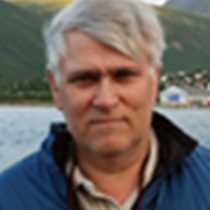Approaching Antarctica & Half Moon Island
Through the morning the ship was plowing towards the outermost land in Antarctica, the South Shetlands. Approaching over the Continental Shelf suddenly the sea was steaming with life. Whales were spotted; rafts of penguins were boiling in the water, flying seabirds of many species surrounding the ship. Most impressive was maybe following the flock of Cape Petrels that were dancing around the bow and the stern of our ship over and over again. Some books will call the same bird Pintado Petrel, which many agree better describes this beautiful seabird where most of the others are very plain colored. Steaming life in the ocean is always a good sign, you are approaching land.
Soon we heard “Land ahead” as some rugged dark rocks, reefs, snow and an ice-covered island appeared ahead in a cold and misty air. James Cook with his ship Resolution was the first to circumnavigate the great white continent (1773 – 74) and three times during that voyage he crossed below the Antarctic Circle only to reach the edge of the pack-ice. He never saw LAND but was convinced land was to be found. TERRA AUSTRALIS and stated it had to be of no use for the King in Great Britain, only covered with ice and very cold.
We, like William Smith in 1819, saw the first piece of Antarctica at South Shetlands. Captain Smith was sailing a cargo ship from Montevideo to Valparaiso and with fear for his ship, sailing against the prevailing wind (westerly) and ocean current, to avoid the Cape Horn because of a severe storm decided to go far south. One day Captain Smith saw land and his news soon traveled the world. The very northern edge of Antarctica had been seen by the human eye.
Soon sealers from both England and New England swarmed over the beaches at South Shetlands to harvest the Antarctic Fur Seals. During the years 1821 - 25 they more or less killed out the whole population of fur seals, in fact as many as one million or more.
Our approach to the frozen Continent was made through the English Strait, a body of water with heavy tidal current and reefs all over. Here our Captain’s navigation skill is put to test. Before lunch our expedition leader Bud Lenhausen gave the IAATO introduction about Antarctica. Well prepared with information on how we should behave among penguins, seals and in a Zodiac, it was time for us to make our first steps in Antarctica, at Half Moon Island.
There was an old wooden shipwreck on the beach where we landed at Half Moon Island that afternoon. It did not take much imagination to believe this boat had been used by the first sealers landing on this beach. No, it is more likely this old lifeboat dates to more modern times but no one knows its full story.
Today we find the seal numbers have not recovered and we find few remains left by the sealers. Place names are all that we find from this period in our past. Yankee Harbour was very much the base for the American sealers from New England. As it was the English who first spotted land here, place names come from the Royal Navy or English sealers such as Livingstone Island, Roberts Island, Nelson Island…
Some made it to the penguin colony, mainly Chinstrap Penguins. Others made a more strenuous hike and later ended up at the penguins. For our birders Half Moon Island was a heyday with bird diversity, not only penguins. Add also some sleepy Weddell Seals along the beach.
Add also the pleasure of starting your first day at South Shetlands with blue sky, a rare event but not less so much appreciated. Now it was time to penetrate deeper into the White Continent. South Shetlands is just a good appetizer.




